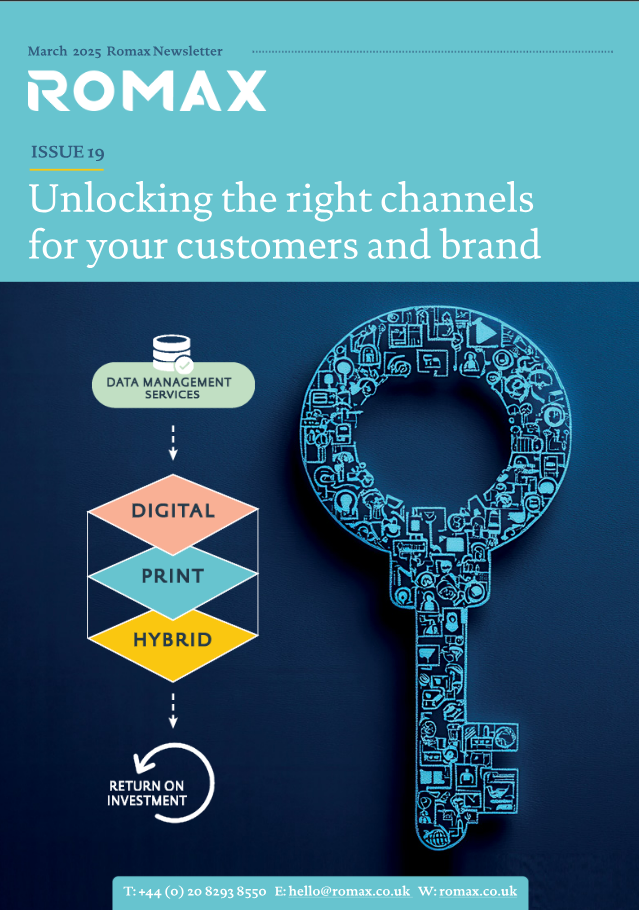The new GDPR legislation doesn’t only affect digital marketing, it also has an impact on traditional print channels. We have taken a little look at what GDPR means for print marketing communications. Let’s dive in.
You may need to update some of your print collateral
The first thing to remember is that GDPR applies to all forms of personal data collection and processing. So, businesses that use traditional print marketing still have to:
- respect the data subject’s rights
- manage personal data responsibly.
If, for example, you’re gathering phone numbers and email addresses via print material, you still need active consent. You won’t be able to assume they’ve opted in simply because they’ve filled in a form. To allow for gaining consent all your print material should be updated, and the copy will have to make it clear exactly what the data will be used for. Your direct mail should provide details on how people can opt out or access their personal data in the future.
So this may mean additional expense because old material has to be discontinued and new material printed up. However, it’ll be worth it because not only will you still benefit from the power of print marketing, but you’ll also be doing it in a lawful way.
Good news for postal marketing: ICO say you won’t need consent
According to the ICO, you won’t need consent for postal marketing if it’s aimed at existing or past customers, or people who have previously shown an interest. This is because you may have a lawful basis under ‘legitimate interest’.
As a lawful basis, legitimate interest has no strict definition and is therefore quite flexible. Essentially it boils down to whether there is any negative impact on a person’s privacy and/or wellbeing. If you can reasonably say that the recipient wouldn’t be surprised or annoyed by communications from you, and indeed they might find it beneficial and it won’t lead them into harmful situations, then you may have a case for legitimate interest. You just need to make sure the recipients can opt out, to respect their right to object.
In addition to this, you won’t need to gain consent if the print material is part of the service you provide i.e. what the recipient expects from you. For example, if you’re running a membership programme that sends out seasonal catalogues, you won’t need to regain consent because this is part of what the members signed up for.
In fact, if you send out consent requests to all your members or mailing lists, you could be causing a nuisance.
The ICO has plenty of helpful information on their website; it’s worth diving into their resource centre and familiarising yourself with best practices.
GDPR could force print marketers into being more efficient
There have been a lot of concerns about GDPR limiting the marketing scope. However, GDPR could actually make the print marketing process more efficient and therefore boost ROIs.
Regularly auditing and cleaning your lists could mean lower print costs. In other words you won’t be wasting resources on sending material to people who are unlikely to be interested.
So, you could end up getting the same results with a lower outlay.
A trend towards door-drop media
Print marketers will be looking for ways to minimize GDPR liabilities. So we’ll probably see a rise in door drop media, a marketing channel that has GDPR compliance baked into it. You won’t even need to use ‘legitimate interest’.
So, what is door-drop media and how does it work?
It’s a direct marketing action that allows you to target households based on postcodes grouped according to their demographic profiles. Use special software to organise postcodes into categories and make well-targeted campaigns. GDPR legislation doesn’t apply because you won’t be processing any personal data.
The ICO has made it quite clear:
“If an organisation is sending mail or leaflets to every address in an area and does not know the identity of the people at those addresses, it is not processing personal data for direct marketing, and the GDPR rules will not apply.”
This makes door-drop media an attractive option for print marketers looking to reduce GDPR risk while maintaining a positive strategic advantage.
« 10 Steps to Keeping Your Business Safe Online Seven Reasons Why Print Marketing is Still Relevant »




